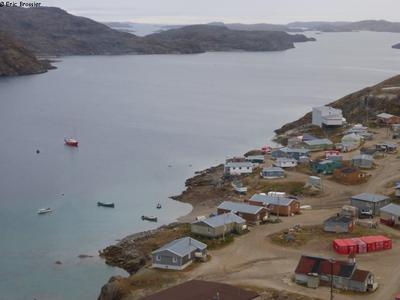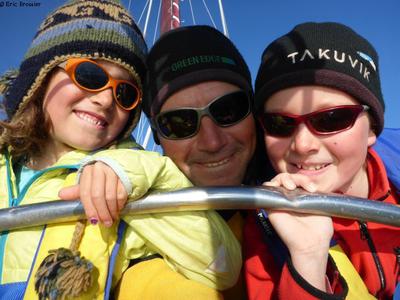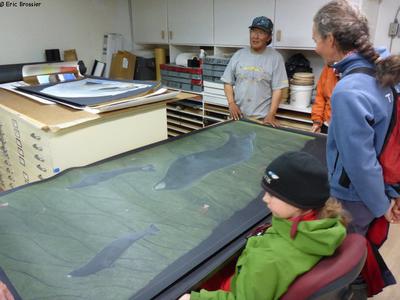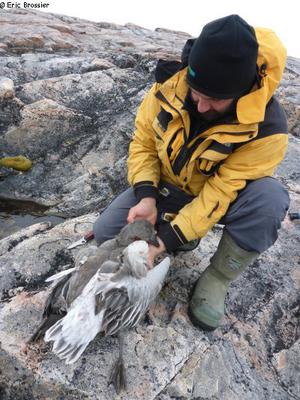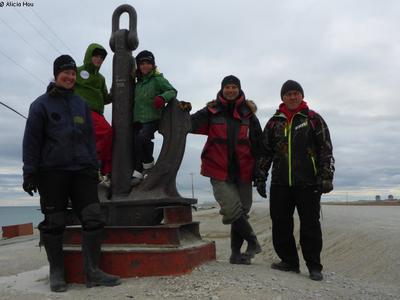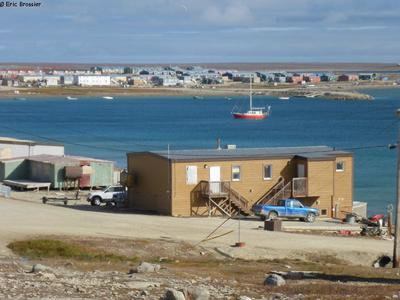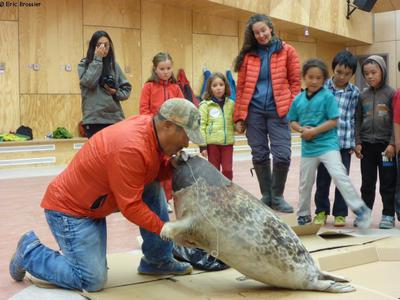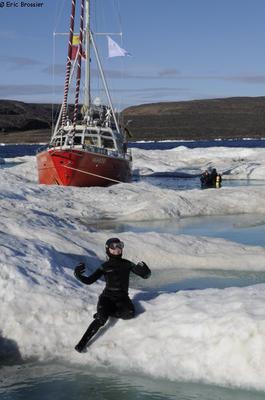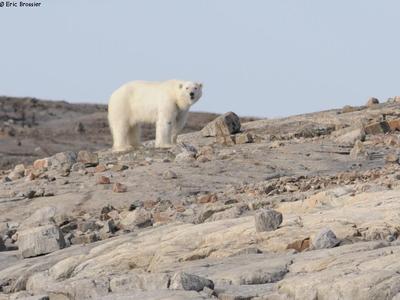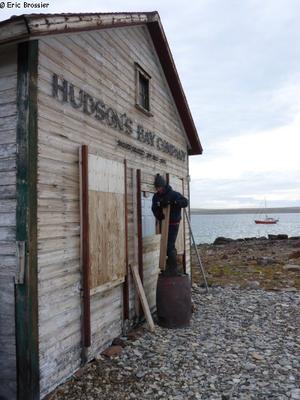Beautiful day, glassy sea and whales when crossing the Gulf of Boothia. The
crew is lucky! Alicia and France can sort out the coralline samples, while the
girls are playing on the front deck.
It's getting dark when Vagabond reaches Baffin Island again, threading her way
through drifting ice. First ice floes since we left Qikiqtarjuaq, end of July!
Magical night watch. A shooting star, very bright, green, is showing me the
way. Radar, sonar, and search light are helping me to find a safe anchorage,
in 4 meters deep water, waiting for the sun to rise to sail again.
Ice charts are clear: mainly open water, only the next 50 miles will have
drifting ice. Early in the afternoon, despite the wind picking up, we choose a
big ice floe to moor to. France is guiding me from the crow's nest, then she
takes over steering to keep the bow against the ice, while I set up an
ice-piton and tighten the rope. We are right at the entrance of Fury and Hecla
Strait and we are drifting at one knot to the East with the current, in the
right direction!
Aurore already slipped on her wet suit. Here she is paddling in the melt
ponds, where France and Alicia are collecting fresh water. Celine and Yves are
diving to explore our ice floe. Leonie is also very excited to run, jump and
dive. Then time to take pictures and videos for our partners. We were all
missing ice!
After all, we spend the short night moored to the ice floe. At 3 am, we enter
the long strait (80 nautical miles). Goodbye pack ice, three cheers for the
good wind and current, our speed reaches more than 9 knots at times. whether
the tide is coming in or going out, it seems that the current remains
favourable. Electronic charts are not yet existing for this region, neither
for the entire Foxe Basin. So we are using a copy of the paper chart given by
the captain of the Amundsen, on which is drawn the route of the ice-breaker.
Even if there is no sounding, the land charts are quite precise and useful
too. As well as the satellite pictures we downloaded before from GoogleEarth.
At the narrowest (Labrador Narrows), the strait is still about 2km wide.
Quickly and without a hitch, we enter Foxe Basin.
Getting to Igloolik is more tiring. Yves tries to find a pass between shallows
from the crow's nest, being shaken a lot. Usually, we can see much better the
seabed from the top of the mast than from the wheelhouse. In vain, we have to
go back and sail all around a little island before entering the nicely
protected bay of this large Nunavut community.
According to the sailing instructions, "it is not possible for other boats
than icebreakers to try to go through Fury and Hecla Strait". This year with
no ice is exceptional. We learn that our friend David Cowper, on board Polar
Bound, went through last week, going West. Vagabond might be the first
sailboat to go through the Strait. A cruise ship is suppose to pass in two
days. Our friends on board the sailboat Pachamama are planning to go through
in a few days.
So now, it seems that sailing in this region is difficult due to the lack of
sea charts, not any more because of drifting ice. For the local hunters and
their small boats, less ice means more waves, which is much more dangerous.
